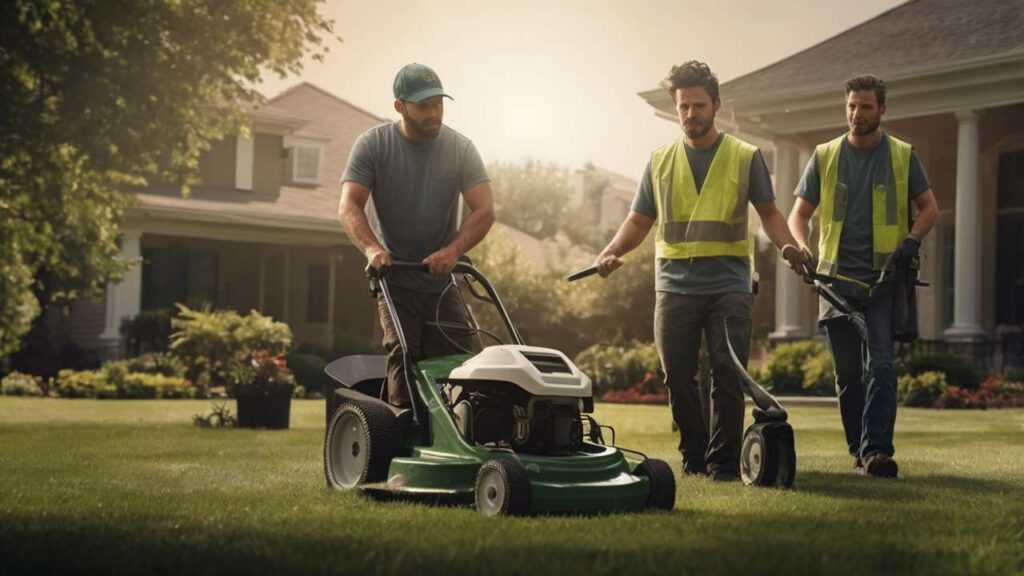Most homeowners spend hours mowing, watering, and even throwing down fertilizer, but the lawn still looks patchy, thin, or just plain tired. The secret isn’t usually on the surface. The real foundation of a healthy lawn is buried underneath—inside the soil itself. And that’s why soil testing and aeration are two of the most overlooked yet powerful steps you can take to bring your grass back to life.
In fact, it’s surprising how many people rush into lawn care without ever understanding their soil. I’ve seen friends spend hundreds of dollars on weed killers or quick-fix fertilizers only to be disappointed. The truth is, until you know what’s happening underground—nutrients, pH balance, compaction—you’re basically guessing. Lawn care experts often say, “Healthy soil equals healthy grass,” and they’re right. Soil testing benefits every homeowner who wants greener turf, while aeration ensures roots can actually breathe and absorb the nutrients you apply.
Even though soil testing and aeration sound technical, they’re not just for scientists or landscapers. These are practical steps any homeowner can understand. And without them, you might fall into the classic DIY mistakes: applying the wrong amendments, ignoring compacted soil, or overlooking drainage issues that slowly suffocate roots.
The Science of Soil Health: Why It Matters
At the core of lawn care science lies one fact—grass is only as strong as the dirt it grows in. Soil is not just dirt, it’s a living ecosystem of minerals, organic matter, microbes, and tiny air pockets that fuel root growth. If any of these elements are off-balance, the whole system collapses.
Take soil pH for example. For most turf grasses, the ideal range is between 6.0 and 7.0. Go too acidic, and vital nutrients like phosphorus or potassium lock up, making them inaccessible to the roots. Swing too alkaline, and suddenly iron deficiencies appear, leaving you with yellow streaks of grass no matter how much you water.
Compacted soil is another silent killer. Over time, heavy foot traffic, kids’ play, and even mowing presses the soil so tightly that water can’t drain and roots can’t spread. Aeration—literally poking holes into your lawn with specialized tools—breaks that cycle. By allowing oxygen, water, and nutrients to flow back into the root zone, it revives the soil’s natural balance.
As Dr. Richard Hentz, a turfgrass specialist, once explained: “Most lawn problems aren’t about what’s happening above ground. They’re about oxygen-starved roots struggling in unhealthy soil.” His point underscores the value of decoding your dirt before doing anything else.
The Process of Soil Testing
Soil testing benefits you in one very specific way: it removes the guesswork. A simple kit or lab test reveals nutrient levels, organic matter, and the exact soil pH. Some DIY kits are cheap, but many homeowners misinterpret the color charts or apply the wrong amendments. That’s why sending samples to a professional lab—or working with trusted lawn care services—is often the most reliable approach.
The process is straightforward: collect soil from several spots in your yard (about 3–4 inches deep), mix it together, and send it for analysis. Within days, you’ll have a breakdown of nitrogen, phosphorus, potassium, calcium, and even micronutrients. The report will tell you exactly what to add and in what amounts.
This is where many homeowners realize their fertilizers have been mismatched. For instance, if your soil is already high in phosphorus, adding more won’t help—it can actually harm the environment through runoff. Instead, a targeted approach saves money and keeps your lawn healthier long term.
Lawn Aeration: How It Works
Aeration sounds intimidating, but it’s basically lawn surgery. Machines called core aerators pull out small plugs of soil, leaving behind holes that look messy for a few days. But those holes are lifelines for your roots. Once the soil breathes again, water flows deeper, and nutrients actually reach the root zone.
Experts often recommend aeration at least once a year, ideally in the fall or spring depending on your grass type. Pairing aeration with overseeding creates perfect seed-to-soil contact, boosting germination rates. It’s like giving your lawn a fresh set of lungs and then planting new life into it.
I once tried to skip aeration in my own backyard, figuring a little fertilizer would do the trick. The result? A lawn that greened up fast but faded within weeks because the roots couldn’t grow deeper. The next year, after proper aeration, the grass survived a brutal summer with far less water. That’s the difference oxygen and root depth make.
Addressing Nutrient Deficiencies and Drainage
A healthy root system doesn’t just happen. Soil testing often reveals deficiencies—low nitrogen leads to pale grass, while lack of potassium makes lawns vulnerable to drought and disease. Lawn amendment applications, such as lime, compost, or slow-release fertilizers, correct these issues. But applying blindly can waste money and damage turf.
Proper soil drainage is another overlooked factor. Poorly drained areas create puddles that drown roots and encourage moss. Aeration helps, but sometimes amendments like sand or organic matter are needed to improve soil structure. Professional lawn care companies often use a blend of aeration and topdressing (spreading compost over the lawn) to rebuild soil quality.
Common DIY Soil Test Mistakes
Many homeowners love the DIY route, and that’s fine. But soil testing at home often goes wrong in small but important ways. Some people only test one spot of their yard, missing the bigger picture. Others test too shallow, pulling just surface soil, which doesn’t reflect what roots actually experience.
Then there’s the “overcorrecting” problem. After seeing one nutrient deficiency, people dump excessive amendments without considering balance. Grass doesn’t thrive on overload—it thrives on balance. That’s why professional guidance, like what you’d get from professional lawn care companies in North Carolina, can save a lot of frustration.
Tying Soil Care to the Bigger Lawn Picture
Understanding your soil is the first chapter, but it connects to every other aspect of lawn care. Aerated, nutrient-rich soil makes weed and pest control more effective because healthy turf naturally resists invaders. It also enhances the results of a year-round professional lawn care schedule, where mowing, fertilizing, and seeding all align with what your soil needs.
This is also where the debate of professional lawn care vs. DIY comes in. Sure, DIY saves money upfront, but professionals bring expert tools, lab-grade testing, and reliable results that often last longer. For many homeowners, the peace of mind outweighs the cost.
There’s also the lifestyle angle: a lush, vibrant lawn boosts curb appeal, improves outdoor living, and even raises property value. Real estate agents often highlight this curb appeal advantage, saying buyers are more attracted to homes with well-maintained turf. Soil care, then, isn’t just science—it’s also an investment in your lifestyle and financial future.
A Case Study in Soil Recovery
One Raleigh homeowner recently struggled with thin, patchy grass despite frequent fertilizing. After a professional soil test, the results showed extremely compacted clay soil with low pH. The recommended fix was a combination of core aeration, lime application, and overseeding. Within one season, the transformation was remarkable—the lawn thickened, weeds diminished, and watering needs dropped by nearly 30%.
This kind of success story shows why decoding your dirt is more than theory. It’s a practical solution that saves money, reduces effort, and delivers visible results.
While soil testing and aeration are foundational, lawn care conversations naturally extend into other areas. Many homeowners want to know how pest control fits into the equation, which is why the ultimate guide to weed and pest control becomes a logical follow-up. Others ask about setting up a calendar—something like a professional lawn care schedule for year-round success—to keep their turf thriving in every season.
There’s also curiosity about cost. The debate over DIY vs. hiring experts continues, with articles breaking down the cost-benefit analysis of time, money, and results. And of course, beyond science and logistics, there’s the emotional payoff—the way a healthy lawn enhances daily living, adds value, and boosts confidence in your home.
Frequently Asked Questions
1. How often should I test my soil?
Most experts recommend soil testing every 2–3 years. However, if you’ve made major amendments or notice sudden lawn problems, testing annually can help track progress.
2. What’s the best time of year for lawn aeration?
Fall is best for cool-season grasses, while spring is ideal for warm-season grasses. Aerating during the active growth period ensures faster recovery.
3. Can I just fertilize without soil testing?
You can, but it’s risky. Fertilizing blindly often leads to wasted money and environmental harm. Soil testing ensures you apply exactly what your lawn needs.
Healthy lawns aren’t built on luck—they’re built on healthy soil. By making soil testing and aeration the foundation of your care routine, you set your lawn up for stronger roots, greener growth, and long-term resilience. Instead of guessing, you’ll finally know what your grass needs and how to deliver it.
If you found this article helpful, share it with neighbors and friends using the social media buttons below. For trusted guidance, check out these resources:
👉 Professional Lawn Care Companies in North Carolina
👉 Lawn Care Services Category
👉 Pro Service Tips Homepage



